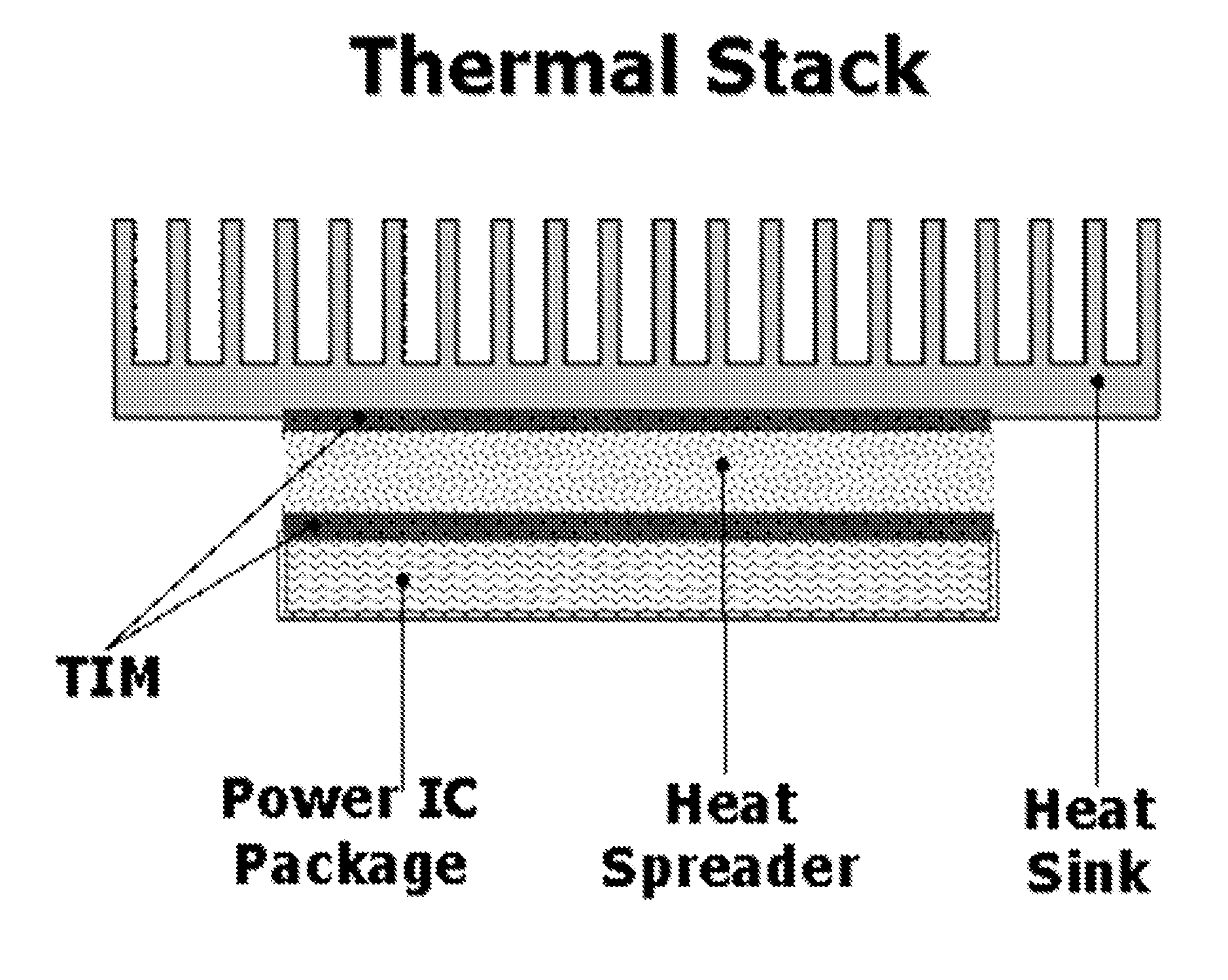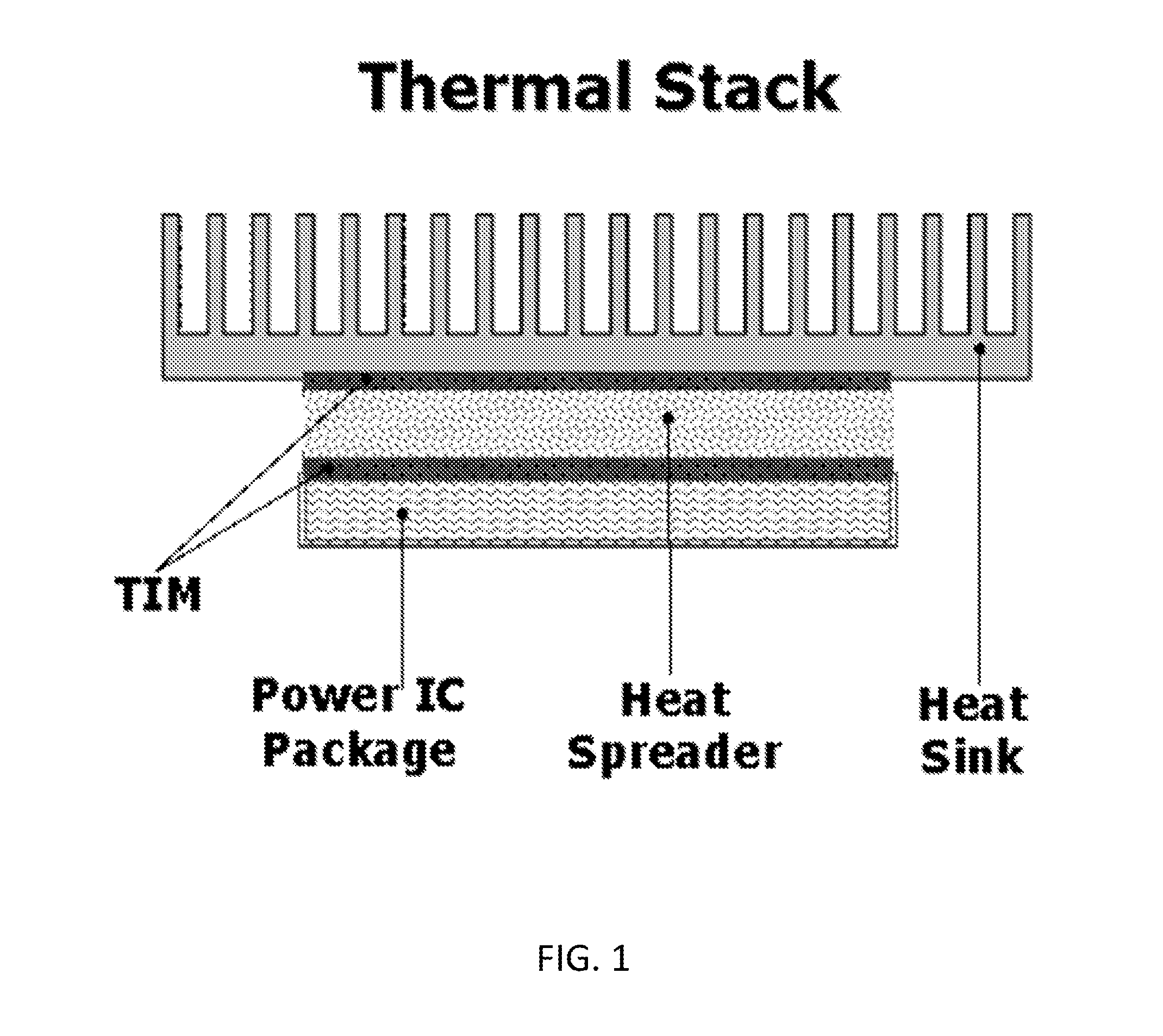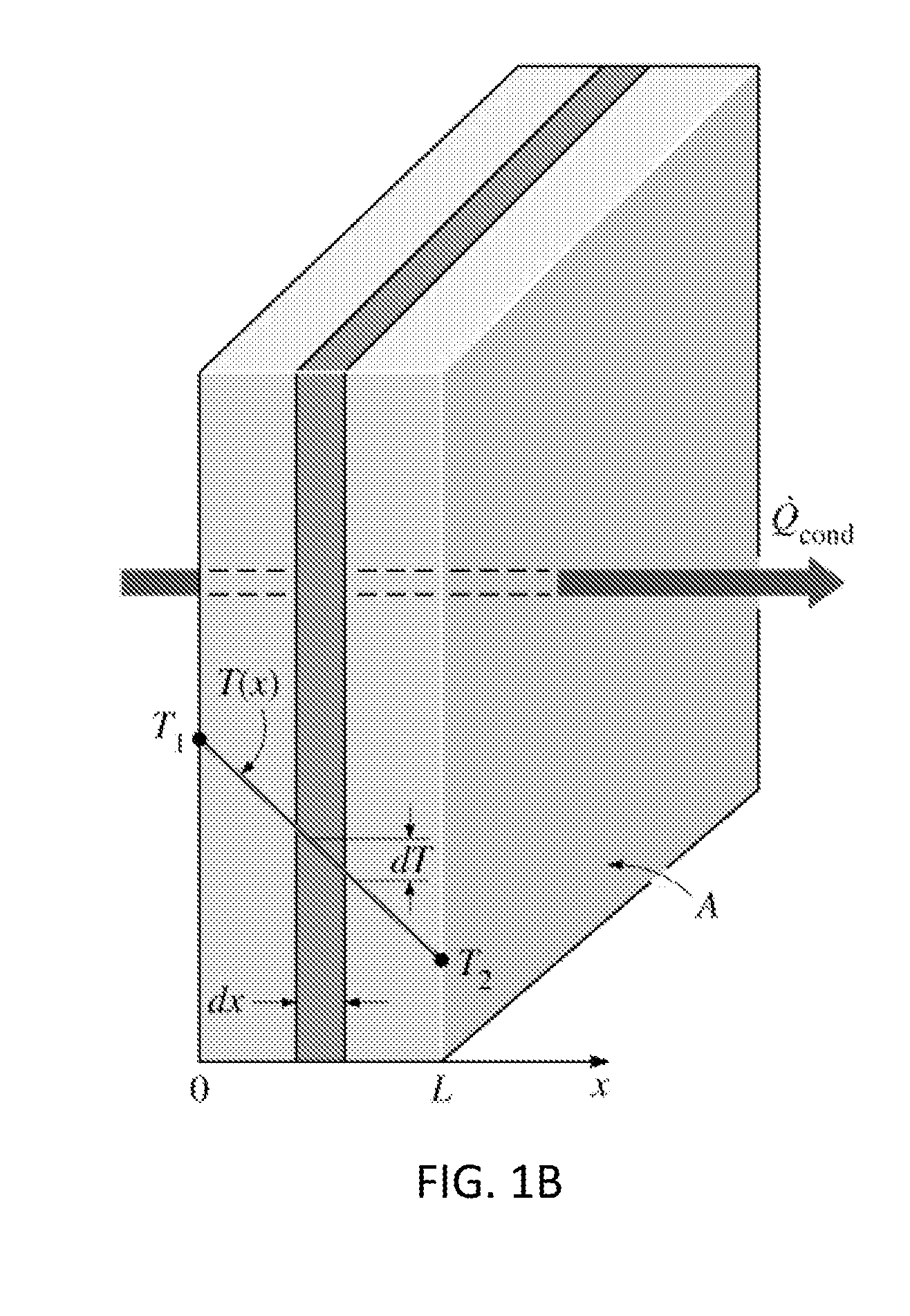Dynamic thermal interface material
a thermal interface and material technology, applied in the field of thermal interface materials, can solve the problems of failure of semiconductor products, temperature exceeding the allowable limit of devices, and development of new functionalities, and achieve the effects of increasing thermal conductivity, increasing thermal conductivity, and increasing thermal conductivity
- Summary
- Abstract
- Description
- Claims
- Application Information
AI Technical Summary
Benefits of technology
Problems solved by technology
Method used
Image
Examples
example 1
Thermal Conductivity Changes as a Function of Temperature
[0169]A mixture was prepared of 1 (one) part by weight of short (2 μm on average) and thin (8 to 15 nm outer diameter) multiple walled carbon nanotubes with 2 (two) parts by weight of nanographite platelets with 0.3 μm on average lateral diameter, and at least ten times smaller average thickness.
[0170]The thermal conductivity change was measured as a function of temperature. Results for a first composition are shown in FIG. 3. Measurements were repeated for further D-TIM samples having a 1:2 by weight MWCNT: nG mix, and the results are shown in FIG. 4.
[0171]In one example, the following material composition was used: 95 to 98% elemental carbon by weight in that SMW 20×-L3 34% by weight, 66% graphite by weight such as for electron microscopy conductive paints, and 3% polymeric binders (polyacrylate). The resultant apparent density was 0.85 g / cm3 as a self-standing material after ambient cure. This was not measured after the the...
example 2
Methods of Preparing a D-TIM Nanocomposite
[0175]Material Composition:
[0176]A nanocomposite material was prepared to have the following composition: 3% polyacrylate binder by weight and 97% elemental carbon allotropes by weight, the carbons being: MWCNT 10±1 nm OD, 3 to 5 micron length at 34% by weight, and 66% graphite nanoplatelets: average lateral diameter 0.3 micron, average thickness below 30 nm. The material was assembled by a non-limiting mixing procedure that involves the following steps.
[0177]Mixing Procedure:
[0178]Step 1: Obtain a homogenous dispersion of a binder with graphite of appropriate dimensions in a solvent, e.g., isopropanol. This is dispersion A. Dispersion A can have a concentration of up to 25 weight percent of graphite in a solvent. Dispersion A can also contain up to 10% binder. The solvent can be a single chemical or a mix of liquid chemical species. The dispersion is a generic process resulting in a homogeneous mixture, such that 90% of particles pass throu...
example 3
Impact of Metal on Thermal Conductivity
[0195]A D-TIM was prepared with 66% nGP (obtained from SPI)+34% MWCNT (obtained from SWeNT)+10% Ag paint added. Relative thermal conductivities were measured in a temperature range of 18° C. to 82° C. The results shown in FIG. 6 indicate that no significant temperature dependence of thermal conductivity is found in the presence of Ag metal particles.
PUM
| Property | Measurement | Unit |
|---|---|---|
| operating temperature | aaaaa | aaaaa |
| thermal conductivity | aaaaa | aaaaa |
| surface roughness | aaaaa | aaaaa |
Abstract
Description
Claims
Application Information
 Login to View More
Login to View More - R&D
- Intellectual Property
- Life Sciences
- Materials
- Tech Scout
- Unparalleled Data Quality
- Higher Quality Content
- 60% Fewer Hallucinations
Browse by: Latest US Patents, China's latest patents, Technical Efficacy Thesaurus, Application Domain, Technology Topic, Popular Technical Reports.
© 2025 PatSnap. All rights reserved.Legal|Privacy policy|Modern Slavery Act Transparency Statement|Sitemap|About US| Contact US: help@patsnap.com



